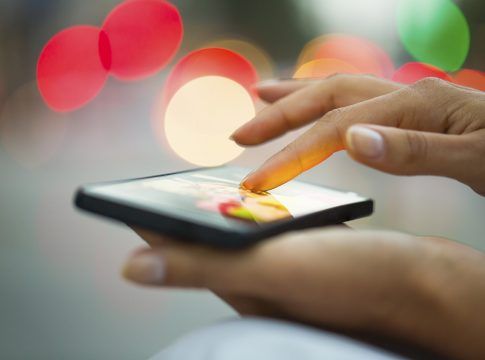Recent news in the media is full of tips and tricks people can use to avoid spreading COVID-19, caused by the novel coronavirus. The common narrative involves keeping your hands clean and not touching your face. But your hands aren’t the only things that touch your face. What about your smartphone?
According to science, that bacteria are very happy breeding on smartphone screens, particularly when they’re used by more than one person. And viruses can cling to glass surfaces for up to 96 hours, multiple days’ worth of potential infection. So whether you want to minimize your risk of coronavirus, the flu, or a bacterial infection, some regular cleaning is advised.
We use our smartphone in many places, and some of the most dangerous bugs have been found on the plastic and glass surfaces of smartphones. From there they can make their way to your fingers, your face, your work desk,dining table at home, home restaurant, and all the other places you put your phone down. So, just about everywhere.
Looking on the bright-side — disinfecting your smartphone doesn’t need industrial-strength chemicals or hazmat suits. You can do a very decent job of cleaning up your phone using the materials you’ve already got at home. It’s also not necessary to clean your smartphone every time you go out—in fact it’s probably bad for it to be scrubbed and wiped so often—but it’s a good idea to do a quick wipe-down when you’ve been traveling, or after other people have used it, or at the very least every week or so.
How to keep your smartphone clean
Be Gentle
You phone is made of expensive and delicate bits of electronics, so you don’t want to dive in with abrasive cleaning solutions and materials. Clorox wipes and the like aren’t just excessive; they can eat away at the oleophobic coating that keeps fingerprints from smudging your display. Simple, common cleaning materials are all you need to get your handset germ-free.
Use a microfiber cloth
Before you start, power down the device, remove any cases, and unplug any accessories so you’ve got full access to the phone. Your main cleaning tool should be a microfiber cloth. Anything that’s soft and that won’t scratch your smartphone will do, though Apple specifically recommends a camera lens cloth, if you want to follow its advice.
Liquids to use
You can start without any fluids at all, just a little pressure, but if needed then you can add warm and soapy water to the mix. Use it sparingly, applying it with your cloth, and drying off the smartphone carefully with another cloth. Be sure to avoid getting excess moisture around ports and buttons.
Avoid Compressed Air
Generally speaking, cans of compressed air aren’t recommended on phones, though you can use them on your keyboard. The powered jet of air might interfere with the inner workings of your smartphone, and you don’t want to take the chance. If you find your phone’s ports have been cluttered with debris, try using cotton swabs or toothpicks to tease it out, again taking care not to cause any damage.
Dip in water if its water proof
If your phone is fully IP68 rated for waterproofing—and triple-check the specs before you attempt this—then you can place the phone in a bowl of clean water for a few minutes, then leave it to dry on a paper towel or dab the moisture off with a cloth.
Using UV light
Another option is an ultraviolet light sanitizer. The science behind UV germ blitzing is robust enough, but they aren’t guaranteed to kill every type of bacteria out there, in every single crevice on your phone. These devices are something you want to use alongside the other methods that we’ve described above.


